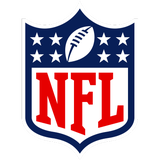The Winnipeg Jets’ season was spectacular but it ended in Round 2.
The Jets won the Presidents’ Trophy and have finalists for the top goaltender, most valuable player, coach of the year and GM of the year awards. They are a good hockey team and should remain one, with or without Nikolaj Ehlers, but there is also an enormous question facing them in the years ahead.
Advertisement
How do the Winnipeg Jets get over the top? What can they realistically do to augment the group that beat the St. Louis Blues in seven games and then lost to the Dallas Stars in six?
There’s no Connor McDavid, Connor Bedard or Macklin Celebrini on the way. The Jets are too good to pick No. 1 and are on track to avoid the top 10 for years to come. Top UFA targets like Mitch Marner, Sam Bennett, John Tavares and Aaron Ekblad are unlikely acquisitions, too; even with stable ownership, cap space to burn and a Stanley Cup-contending roster, the Jets have never been a top UFA destination.
It’s remarkable, then, that the Jets finished No. 1 in the regular season standings at all. They’re Cup contenders, pending Ehlers’ future (or their attempt at his replacement) and they’ve done it through a combination of savvy trades and by developing their own players — despite trading away a ton of draft capital in the name of winning. In this way, the Jets’ poor UFA track record hurts them twice — by keeping top end talent out of Winnipeg on July 1 and by incentivizing trading first-round picks in search of No. 2 centres. That said, it also helps them by keeping Winnipeg away from albatross UFA contracts.
But this isn’t a case of a team running roughshod over the NHL, making it to the Stanley Cup Final and getting beaten by a fluke in Game 7 OT. The Jets are doing their best to maximize every avenue of talent acquisition and haven’t made it as far as the third round since the Vegas Golden Knights beat them in 2018.
That team believed it had the cavalry coming in the form of top young players maturing into bigger roles. This one is led by Connor Hellebuyck, Mark Scheifele and Josh Morrissey — all on the wrong side of 30. The window to win depends on that trio maintaining elite performance before inevitable age-related decline. Elias Salomonsson, Brayden Yager and Brad Lambert are good prospects but don’t match the superstar potential of 2011-2016 first-round picks Patrik Laine, Kyle Connor, Ehlers, Morrissey, Jacob Trouba and Scheifele.
Advertisement
So how do the Jets maximize this window? What can they do to take the next step in the playoffs before it’s too late?
These are bigger questions than typically get asked of first-place teams, but the urgency is real. The Jets’ best players are still great but on the downswing of their aging curves. The next wave — Dylan Samberg, Gabriel Vilardi and Cole Perfetti — is entering its prime. What could come next that would lead Winnipeg to the Stanley Cup?
The mythical Tkachuk acquisition
This section is up there with “draft Connor McDavid” as far as helpfulness goes, but there is a common thread that connects most of Winnipeg’s recent trade targets. Whether it’s Brandon Tanev, Luke Schenn, Alex Iafallo, Vladislav Namestnikov or Nino Niederreiter, the Jets have clearly tried to supplement their stars with players who are a pain to play against.
Ideally, Winnipeg’s star players would be a pain to play against in their own right. It’s just not realistic to expect Connor, Scheifele and Vilardi to play on the edge like Matthew Tkachuk, Sam Bennett or Brad Marchand do. The Panthers didn’t draft any of those players, nor did they draft Sam Reinhart, but they’ve been aggressive on the trade front, putting themselves first in line whenever a highly talented, playoff-ready curmudgeon becomes available. It’s not Niederreiter or Namestnikov’s fault they’re not Tkachuk, but there’s clearly a difference in outcomes when the truculence comes attached to a point-per-game star player.
Winnipeg’s solution may be to identify targets who are closer to the middle class — more impactful than Tanev or Namestnikov, more likely to be available than Tkachuk. Andrew Mangiapane is a pending UFA, for example. Tanner Jeannot was once thought to have offence in his game. As rare as it may be for a Tkachuk, Marchand or Tom Wilson-type player to become available, they could certainly add a valuable dynamic to the Jets.

The Jets could use another Dustin Byfuglien on the back end. (Gregory Shamus / Getty Images)
The somehow yet more mythical Byfuglien acquisition
Dustin Byfuglien was perhaps even more rare as a defenceman than Matthew Tkachuk is as a forward (and didn’t have a heavy-hitting little brother in the league). He’s not fair to invoke as a trade target or UFA signing, but useful to us as a symbol. Wouldn’t Josh Morrissey have done better than getting outscored 6-2 if he had a massive, mobile, puck-moving force to help him clear the crease and get pucks up ice against St. Louis and Dallas?
Advertisement
That’s the score Winnipeg picked up in the playoffs with the Morrissey/Dylan DeMelo pairing on the ice at five-on-five — a huge disappointment after they’d won their regular season minutes 51-36 while controlling 55 percent of expected goals (via Evolving Hockey).
Watching them get pounded on each puck retrieval vs. St. Louis — and then watching Morrissey get hurt, twice — should have been a call to arms for the Jets. They’ve heavily invested in Morrissey, DeMelo and Neal Pionk and are about to heavily invest in Dylan Samberg. This makes for a smart, talented top four defence corps, but one that’s more likely to take punishment than to dole it out. Add that disadvantage to Hellebuyck’s woes fighting through traffic (and acknowledge that bigger D-men like Luke Schenn and Logan Stanley didn’t help on this front) and the symbol of Byfuglien lives on.
Aaron Ekblad isn’t quite it, nor is Ekblad a realistic UFA target. Vladislav Gavrikov plays an effective, physical style, but is well-liked in Los Angeles. It’s easy to understand why past versions of the Jets were so interested in Jamie Oleksiak, although he’s not a top-four solution anymore.
The uncertain path to a second-line centre
Adam Lowry had hip surgery on Tuesday. His recovery is expected to take five to six months, taking until the end of October or November. The Jets needed help at centre before Lowry’s surgery and tried to acquire Brock Nelson at the trade deadline. As I wrote in March, the Jets believed they had a deal done for Nelson at that time.
There are some wonderful UFAs available, Nelson included, but free agency isn’t typically kind to the Jets. They’re not going to sign Sam Bennett or John Tavares this offseason, although players of that caliber would clearly go a long way toward putting Winnipeg over the top.
Could the Jets trade for a centre instead of signing one? Andrew “Hustler” Paterson put the idea to me on this week’s Winnipeg Sports Talk and it’s an easy idea to run with. Winnipeg sent three first-round picks away from 2018 to 2024 for pending UFA centres (Paul Stastny, Kevin Hayes, and Sean Monahan) who signed elsewhere on July 1. It seems as though Nelson may have signed elsewhere even if the Jets had acquired him at this deadline, too. Would it not make sense to trade for a younger centre with years of team control instead of waiting until the trade deadline to go after pending free agents?
Let’s say the Minnesota Wild put 60-point RFA centre Marco Rossi on the market — a distinct possibility, given the 23-year-old’s unhappiness with his usage. It’s unlikely that a 5-foot-9, 182-pound centre is the solution to Winnipeg’s playoff dreams but Rossi’s skill is undeniable and he’s not UFA eligible until 2029.
Advertisement
The example may not be ideal but the concept is strong. The Jets are going to keep throwing assets at their second-line centre hole until the position is filled. A younger option with team control would give Winnipeg long-term stability, while freeing up deadline day assets in the pursuit of other upgrades.

Cole Perfetti skates up the ice with Dylan Samberg in pursuit. (Harry How / Getty Images)
A young player going supernova while the core is still great
Cole Perfetti is alone among current Jets with NHL experience, draft pedigree and enough youth to project a continued upswing. Dylan Samberg and Gabriel Vilardi have established themselves, but they’ll each be 26 years old by the start of next season. Logan Stanley just turned 27; the Zdeno Chara dreams are history now.
In 2018, the Jets’ great hope was that Laine, Ehlers, Connor, Morrissey and Trouba would develop into great players while Blake Wheeler, Scheifele and Byfuglien were still at their peak. It seemed realistic, based on the sheer volume of high draft picks and their early returns: the 2017-18 Jets got more than 100 goals from players who were 21 years old or younger when the season began.
Perfetti may strike closer to a point per game — especially if he replaces Nikolaj Ehlers on the first-unit power play — but there’s only one of him. Lambert scored seven goals and 35 points in the AHL this year. Yager has yet to play at the AHL or NHL level, while Colby Barlow’s playoffs offer long-term hope after a pedestrian 20-year-old season in the OHL.
This leaves Winnipeg with two shots at stunning star turns: Perfetti, 23, and Elias Salomonsson, who turns 21 in August. Salomonsson is Samberg-esque in his defensive intelligence, while skating better and achieving elite AHL results at a younger age than Samberg did. That doesn’t mean he’s a surefire NHL player this season — there isn’t a lot of room at right defence — but it bodes well long-term. The Jets’ defence corps is all right if Salomonsson peaks early enough and at a high enough level while Morrissey and Samberg are still excelling in their roles.
Perfetti took an exciting step forward this season. The Jets would do well to look at a long-term extension this summer before power-play opportunity raises his price for a second time. Ideally Winnipeg would have two or three players in his position — or a lottery pick, which isn’t in the cards — or even more promising signs from Lambert, Barlow and Yager relative to their age.
Connor Hellebuyck goes full Hellebuyck
This is the easy way out of the thought exercise. One way for Winnipeg to make it to the third and fourth rounds of the playoffs is for Hellebuyck to shake off his recent playoff misery. Hellebuyck could carry the Jets that far himself with a string of performances like Game 2 or Game 5 against Dallas — or, more spectacularly, like Round 1 against the Edmonton Oilers in 2021.
Advertisement
To watch Hellebuyck get shelled against St. Louis and then start to question himself — just as he did against Colorado last season — is to think Winnipeg needs to do a better job of insulating him from crease-crashing playoff brutality. Hellebuyck has been the best regular-season goalie of the past several years because of his reads and his positioning — but through processing power, not acrobatics. We’ve seen multiple teams bully the Jets in the slot now, taking Hellebuyck’s sightlines away from him such that he’s left to scrap for positioning. He’s gotten off his game, confessing last year that he tried to put too much on his own shoulders and this year that he started to doubt his own process as the goals piled up.
It’s a tempting, easy out as far as projecting Winnipeg’s success goes. Snap your fingers, give Hellebuyck league-average results, and Winnipeg is dealing with Edmonton in Round 3 right now instead of sorting out its offseason. And it’s entirely possible that he gets hot at the right time, or finds a better way to manage net-front chaos against his Central Division rivals.
I think the Jets’ best play at helping him do that comes in the form of that mythical Byfuglien figure discussed above. In a playoffs where Winnipeg lapped the field in terms of giving up goals on screens, part of the solution must come from Hellebuyck and part of it must come from what happens in front of him.
(Top photo: Sam Hodde / Getty Images)
This news was originally published on this post .







Be the first to leave a comment